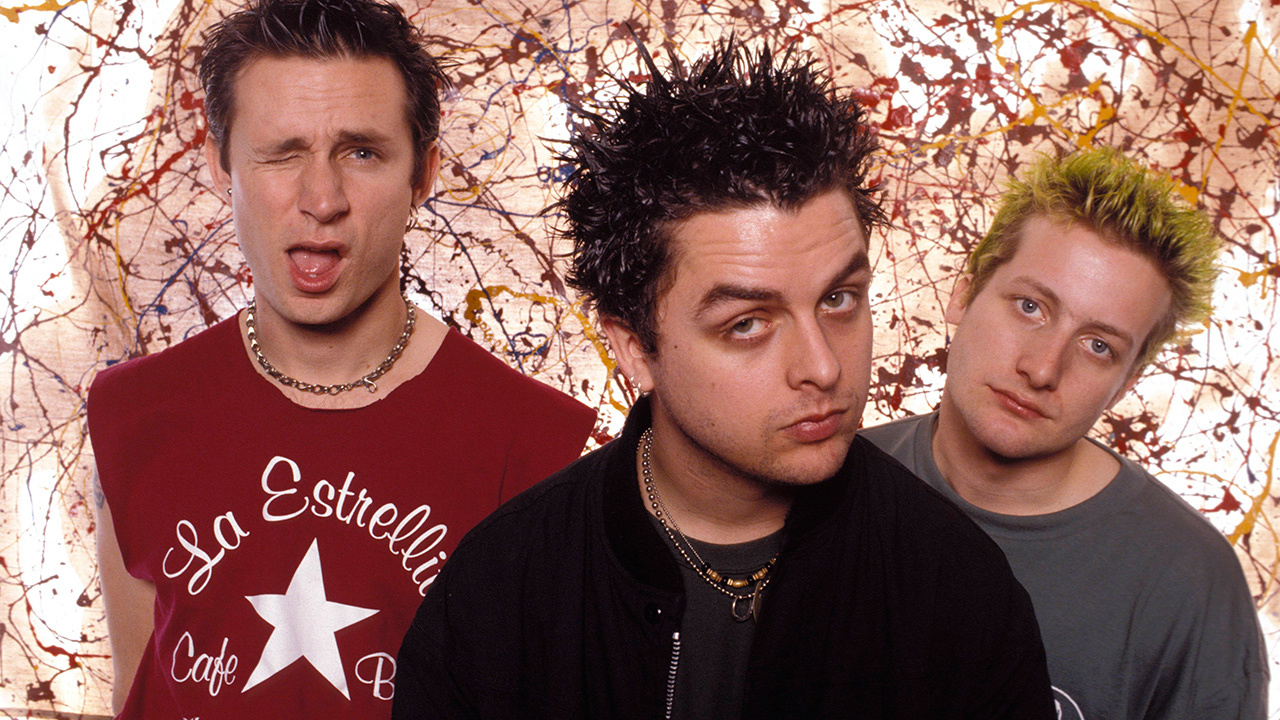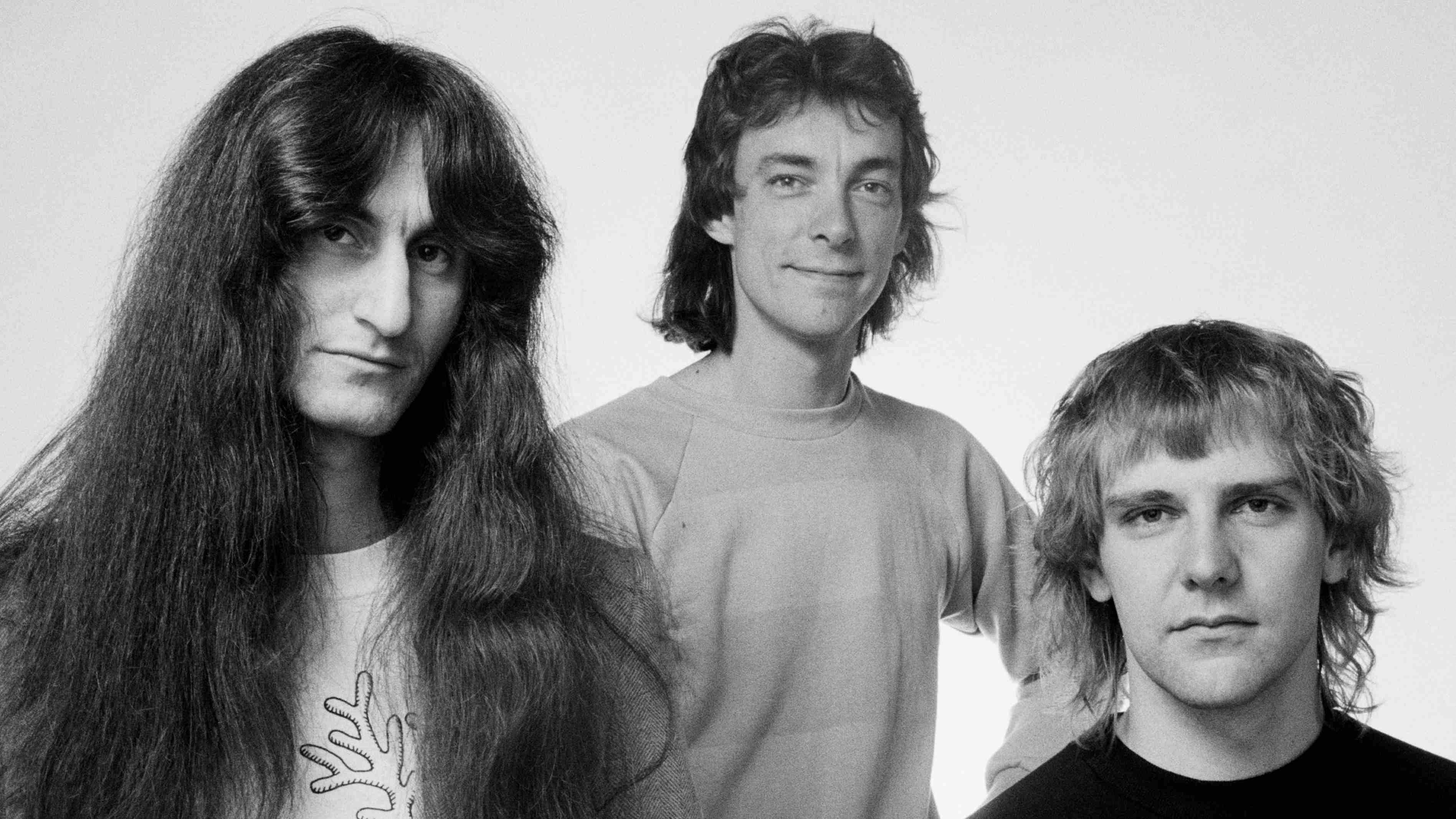How Green Day's Dookie dragged punk rock into the mainstream
In 1994, with their major-label debut Dookie, Green Day pointed the way forward for alternative rock for the rest of the decade – here we chart the rise of the band from the underground

By 1993, Green Day were already a successful band by anyone’s standards, with the compilation 1,039 / Smoothed Out Slappy Hours and the album Kerplunk having sold more than 30,000 copies each and gained the band a rapidly expanding live following.
Green Day’s rise to stardom began when, after years of looking after their own affairs, they were picked up by managers Elliot Cahn and Jeff Saltzman (who already had Mudhoney, Melvins and Primus on their books). It’s not clear whether a firm decision had been made to sign the band to a major at this stage, as Epitaph were among the labels they approached with a new demo – and were apparently keen to work with them – but as the other contenders included Geffen and Sony it seems likely.
What is certain is that by this time, the members of Green Day (singer/guitarist Billie Joe Armstrong, bassist Mike Dirnt and drummer Tre Cool), for all their working-class backgrounds, had developed a canny business sense, and a firm belief in their own abilities. They insisted that whatever label they went with, the band have total artistic control – something promised to many artists down the years, but rarely delivered.
Naturally, Green Day took their time, holding out for the best offer. The turning point came when Rob Cavallo (the son of Prince/Alanis Morissette manager Bob Cavallo), an A&R man and producer for major label Reprise/Warners, received a copy of the demo and then headed out to Berkeley in 1993 to meet the band. Cavallo once revealed: “I’ll never forget when Green Day said to me – it was so cool when they said: ‘We’re going to be a great band.’ And they knew it. ‘We’re going to be a great band no matter what Reprise does for us.’ They could already draw 1,000 kids in a good 10 or 12 cities across this country, and they’d already played in Europe. These kids in Green Day were 21 years old. They knew what it took to be successful in the music business. They never had jobs, they made their living by being a band by the time they were age 16 or 17.”
As Cavallo said, in addition to the quality of their early releases, the band’s status by this stage was built on gruelling tours of the underground punk circuit, covering both the US and Europe thanks to budget-priced flights. Green Day had played small clubs in such glamourous UK spots as Wigan and Newport, and squats in Germany, all off their own backs.
Green Day’s Mike Dirnt said at the time, “You know, every band who sold records is getting branded with the sell-out label, especially from fans who liked them in their early, unsuccessful days. They think they’ve found something, they identify with you because you’re underdogs, and then you make it and they hate you. They feel you’ve betrayed them because now others like you too. We didn’t start the band to cash in a lot of money. When we started out, punk was probably the most unpopular music around.”
Even with a major-label budget at their disposal, the band’s now deeply ingrained work ethic meant that the 17 tracks that were laid down at Fantasy Studio in Berkeley for the Dookie session were recorded in just 19 days, working 12 hours a day. The title is US slang for turd, and was slimmed down from the original concept of Liquid Dookie on the grounds that it was “too gross”.
The latest news, features and interviews direct to your inbox, from the global home of alternative music.
Released on February 1, 1994, Dookie entered the US Billboard chart at a modest No.141, but soon picked up momentum with the success of Longview, the first single taken from it. That was aided in no small part by its chaotic accompanying video, which was shot in the basement of Billie Joe and Tre’s apartment on Ashby and Telegraph Avenue in Berkeley. It gained plenty of airplay on MTV, and Longview was soon heading up the chart, and went on to reach No.3 on Billboard’s end-of-year Modern Rock listing.
- American Idiot: Revisiting the album that made Green Day stars
- 10 things you might not know about Green Day drummer Tré Cool
- Our TeamRock+ offer just got bigger. And louder.
- How Green Day's Basket Case changed pop-punk forever
With its great songs, and the backing of a major label and MTV, it was perhaps inevitable that Dookie would be huge. But there was one other important factor in its elevation (and that of Green Day) to such dizzy heights, and that was the ill-fated Woodstock ’94 festival. To many people it seemed a pretty ludicrous idea from the start: resurrecting a festival that, despite the mythology surrounding the original one in 1969 (and some amazing performances from the likes of Jimi Hendrix and The Who), was an organisational disaster, and building the new version on long-outmoded ideals. As it turned out, Woodstock ’94 was nothing like the Woodstock in 1969 – it was much, much worse.
At least the intentions of the first Woodstock were good: to put on a festival with all the finest acts available to hippydom. Held over the weekend of 12-14 August 1994 at Winston Farm in upstate New York, Woodstock ’94 was strictly a money-making deal, with punters paying $135 (£84) for entrance and appalling facilities. On top of all that, there was the rain, which pelted down almost incessantly for the whole weekend, reducing the site to a quagmire – and the tolerance levels of the 250,000 punters to zero.
At the time of the festival, Dookie had just picked up a gold disc for sales of over 500,000, so naturally Green Day’s spirits were high when they went on stage at 3pm. But opening with Welcome To Paradise was either taking the piss or just unwise (we know which our money is on). The crowd had been chanting for the band during the performances that preceded them, so it’s not as if they weren’t among friends. But when a few fans chucked mud at the stage, Armstrong and Dirnt began goading them to hurl more – which they were more than happy to do. With the stage by now almost as much of a mess as the rest of the site, Armstrong removed his trousers, although whether it was this that provoked fans to begin attempting to invade the stage is unclear. In the ensuing chaos, Dirnt lost some teeth when a member of the security crew knocked him into a monitor, believing him to be a member of the audience.
To say that the organisers were unimpressed would be a huge understatement. Their set cut short, Green Day were ushered from the stage and immediately spirited away by helicopter. The resulting publicity was all that was needed to give them the final push from being a big band to being the biggest punk band in the world.
The Top 10 Best Green Day Videos
The story of how a spiteful ballad turned Green Day into megastars
